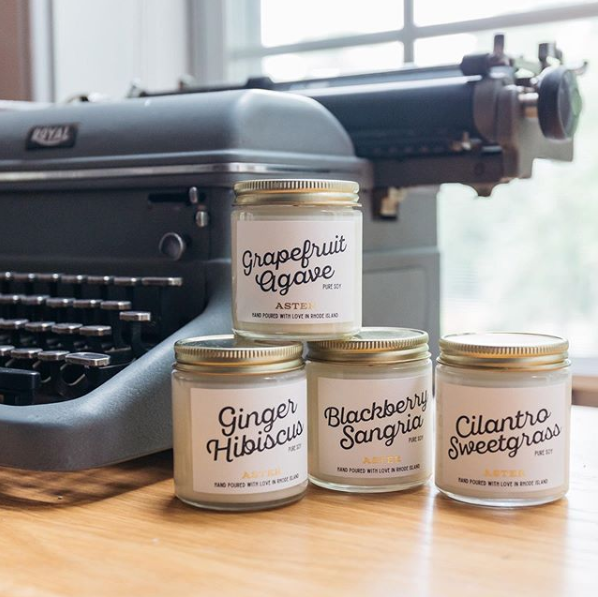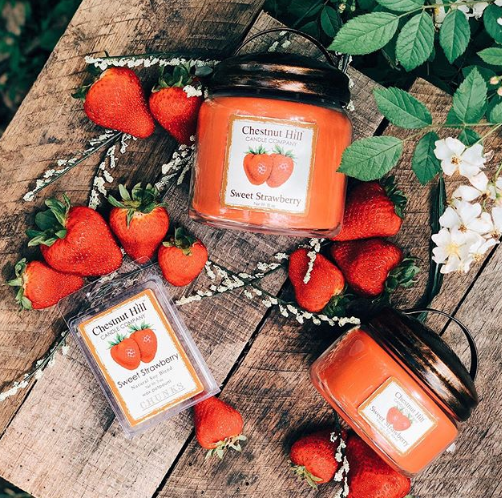4 Key Candle Label Considerations
Include Valuable Basic Information
While various products need to share different information depending on the nature of the components, there are some details that are pretty standard for every product label. As such, you’ll want to start by including the following pieces of information on your candle labels:
- Product name
- Company name and logo
- A unit of measurement (in this case, candle weight)
- Contact information/website
Once those are covered, there are some candle-specific details you should add. The following information will provide consumers with some specific details that will help them decide which of your products is right for them.
- Candle scent
- Type of wax used
- Projected burn time (hours the candle will last)
- Container specifications

Add Recommended Fire Safety Details
While candles aren’t as closely regulated as products like alcohol, CBD/THC goods, or other items, there are some label standards in place. As the major trade association representing U.S. candle manufacturers and suppliers, the National Candle Association (NCA) notes that every candle should include the following three fire safety rules included on its packaging:
- Burn within sight
- Keep away from things that can catch fire
- Keep away from children
The NCA isn’t too specific on where this information should be listed, so the label, a tag, or even a dust cover are acceptable places for listing the warnings. In addition to the three rules, the NCA also suggests adding graphic safety symbols to represent each rule. Those symbols are available for downloaded on the NCA site.
While the fire safety rules and graphics are a good start – and mandatory for any NCA members – it’s also good practice to include some form of manufacturer instructions for burning your candles properly. Candles are tested according to the ASTM F2417 Fire Safety Standard, which will allow you to provide customers with instructions about burn length, which type of container to use (if one is not provided), and other important details.
Optimize Label Placement
Between branding and information, you may reach a point where you’re tight on label space. Fortunately, you may be able to utilize the size, shape, and packaging or your candle to improve your branding.
It’s no surprise that the side of your candle – or the container it sits in – is a prime spot for label placement. However, you shouldn’t overlook the underside of your product. While the side of your panel is a great spot for basic product info and special design elements, you can include fire safety and other less brand-heavy details on a separate label applied to the bottom of your candle or container. Container lids also offer more potential for labeling space. If it has a surface, there’s an opportunity for branding as long as your label can survive in that space.
Identify the Right Label Material and Adhesive for Candles
Your customers aren’t the only ones who need to be careful with fire. The heat created by your candles also plays a direct role in your choice of label material and adhesive. While you don’t have to stay close to the flame, your label doesn’t have a choice. This close proximity to the heat the flame emits means your label needs to withstand temperatures up to 1,500 degrees Fahrenheit depending on your product.
In addition, candle labels must handle repeated fluctuations in temperature, i.e.when your candle is lit or put out. The right choice of material and adhesive can help prevent premature label failure. For example, a thick biaxially oriented polypropylene (BOPP) material and an acrylic adhesive is more likely to withstand the heat.
Your application surface and process also plays a part in your choice of materials and adhesive. Every surface creates different challenges. For example, the wax of a candle has a different surface energy and adhesive needs than a glass jar. Your choice of hand or machine application will also play into which labels are right for you (along with other key details like unwind direction that can impact application).

Invest in the Best Labels for Your Candles
From design to application, there are several variables that can impact the success of your labels. However, it can be difficult to identify the right solution for your exact product without an expert.
Fortunately, Blue Label can help you figure out how to get the most out of your candle labels. Our experts can work with you to not only determine the right materials and adhesives for your labels, but also how to enhance your designs through special printing capabilities. Contact us today if you’re ready to invest in custom candle labels for your business.